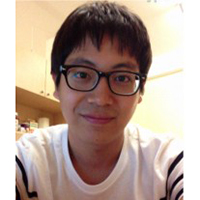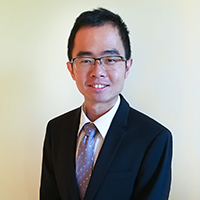 Mr. Park’s research focuses on optical neural tissue engineering that combines optogenetics, electronic scaffold engineering, and tissue regeneration. In his first project, he demonstrated that optical stimuli can be used to enhance nerve growth by three fold and also control its direction (Park, Sci. Rep. 2015). Combining this technology with multimaterial fiber fabrication methods, he was able to create optoelectronic scaffolds that would enhance nerve growth and monitor it at the same time. This research has led him to the design of multifunctional fiber-based probes that permitted microfluidic delivery of genes and compounds into the brain while allowing for simultaneous recording and stimulation. These tools have enabled one-step optogenetics – a method where one device sensitizes the brain tissue to light in order to control and investigate neural circuits with minimal invasiveness (Park, Nat. Neurosci. 2017). Seongjun has also applied his expertise in neural recording, stimulation and signal processing to the spinal cord. Together with a colleague he developed and evaluated stretchable spinal cord probes compatible with chronic implantation in freely moving mice (Lu*, Park*, Sci. Adv. 2017). The importance of Seongjun’s work has already been recognized by the neuroscience community. He has been sharing his devices with tens of labs across the world and has hosted a number of visitors eager to adopt his tools to study neurological and psychiatric disorders.
Mr. Park’s research focuses on optical neural tissue engineering that combines optogenetics, electronic scaffold engineering, and tissue regeneration. In his first project, he demonstrated that optical stimuli can be used to enhance nerve growth by three fold and also control its direction (Park, Sci. Rep. 2015). Combining this technology with multimaterial fiber fabrication methods, he was able to create optoelectronic scaffolds that would enhance nerve growth and monitor it at the same time. This research has led him to the design of multifunctional fiber-based probes that permitted microfluidic delivery of genes and compounds into the brain while allowing for simultaneous recording and stimulation. These tools have enabled one-step optogenetics – a method where one device sensitizes the brain tissue to light in order to control and investigate neural circuits with minimal invasiveness (Park, Nat. Neurosci. 2017). Seongjun has also applied his expertise in neural recording, stimulation and signal processing to the spinal cord. Together with a colleague he developed and evaluated stretchable spinal cord probes compatible with chronic implantation in freely moving mice (Lu*, Park*, Sci. Adv. 2017). The importance of Seongjun’s work has already been recognized by the neuroscience community. He has been sharing his devices with tens of labs across the world and has hosted a number of visitors eager to adopt his tools to study neurological and psychiatric disorders.

Mr. Liang’s research is in the area of biomedical imaging for gastrointestinal cancer screening. Studies integrate advanced imaging technology development with translational investigations in patients, working in collaboration with clinicians at the Boston VA Healthcare System and Harvard Medical School. A key aim is the development of optical coherence tomography tethered capsule imaging methods which can be a lower cost adjunct to endoscopies and do not require sedation.